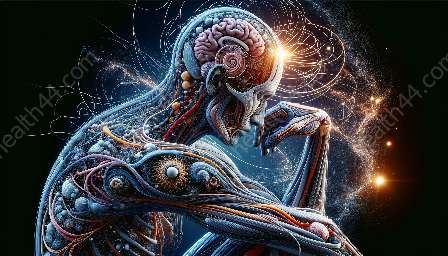The study of ophthalmic anatomy delves into the complex structures and functions of the eye. Understanding the intricate details of this anatomy is crucial for health education and medical training, as it forms the foundation for diagnosing and treating various eye conditions. In this comprehensive guide, we will explore the fascinating world of ophthalmic anatomy, its relevance to general anatomy, and its significance in health education and medical training.
The Anatomy of the Eye
The eye is an incredibly intricate organ that allows us to perceive the world around us. Its anatomy consists of several key components that work together to facilitate vision. These components include the cornea, iris, lens, retina, optic nerve, and various muscles that control eye movements.
The cornea is the transparent front part of the eye that covers the iris, pupil, and anterior chamber. It plays a crucial role in focusing light into the eye. The iris, on the other hand, is the colored part of the eye that controls the size of the pupil, regulating the amount of light that enters the eye.
Behind the iris lies the lens, which focuses light onto the retina, located at the back of the eye. The retina contains photoreceptor cells that capture light and convert it into electrical signals, which are then transmitted to the brain via the optic nerve.
The anatomy of the eye also encompasses the muscles that control its movement. These muscles work in harmony to allow the eye to move in different directions, facilitating clear and accurate vision.
Relevance to General Anatomy
Understanding ophthalmic anatomy is closely linked to general anatomy, as the eye is a crucial part of the human body. Its intricate structures and functions reflect the complexities of the overall human anatomy. Knowledge of ophthalmic anatomy enhances the understanding of sensory organs, nervous system pathways, and the interconnectedness of various bodily systems.
Moreover, ophthalmic anatomy provides insights into the integration of sensory input and motor control, highlighting the intricate coordination between the eyes, brain, and other sensory organs. This knowledge is indispensable for medical professionals and students seeking a comprehensive understanding of the human body.
Significance in Health Education
The study of ophthalmic anatomy holds immense value in health education. It equips healthcare professionals with the knowledge required to assess and manage a wide range of eye-related conditions. By understanding the complex structures of the eye, healthcare practitioners can effectively diagnose and treat conditions such as refractive errors, cataracts, glaucoma, and retinal disorders.
Furthermore, an in-depth understanding of ophthalmic anatomy allows healthcare educators to effectively convey essential eye care information to patients and the general population. Educating individuals about the anatomy and function of the eye is crucial for promoting eye health, preventing vision problems, and encouraging early intervention in case of eye disorders.
Relevance to Medical Training
In the realm of medical training, ophthalmic anatomy serves as a fundamental component of ophthalmology, optometry, and related specialties. Aspiring ophthalmologists, optometrists, and ophthalmic technicians undergo rigorous training to master the intricacies of eye anatomy and physiology.
Proficiency in ophthalmic anatomy is essential for conducting accurate eye examinations, performing intricate surgical procedures, and prescribing appropriate treatments. Medical training programs incorporate in-depth studies of ophthalmic anatomy to ensure that future eye care professionals possess the knowledge and skills necessary for delivering high-quality care to patients.
The Complexity and Precision of Ophthalmic Anatomy
The world of ophthalmic anatomy is characterized by its complexity and precision. The delicate structures of the eye require meticulous attention to detail, as even minor deviations can significantly impact vision and overall eye health. This precision makes the study of ophthalmic anatomy both challenging and rewarding, as it enables healthcare professionals to navigate the intricacies of eye-related conditions and deliver targeted interventions.
Moreover, the interplay between ophthalmic anatomy and other aspects of general anatomy highlights the interconnectedness of the human body. The eyes, often referred to as the windows to the soul, offer remarkable insights into the complexities of human anatomy and physiology.
Conclusion
Exploring the world of ophthalmic anatomy unveils the awe-inspiring intricacies of the eye and its crucial role in human health. Through its relevance to general anatomy, health education, and medical training, ophthalmic anatomy enriches our understanding of the human body and serves as a vital pillar of healthcare. As we continue to unravel the mysteries of ophthalmic anatomy, we gain a deeper appreciation for the remarkable complexities that underpin our ability to see and perceive the world around us.


